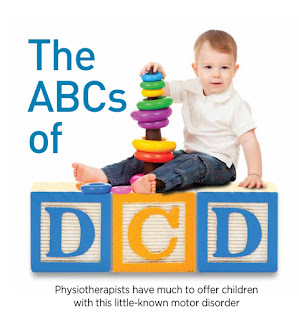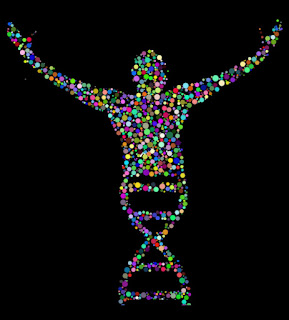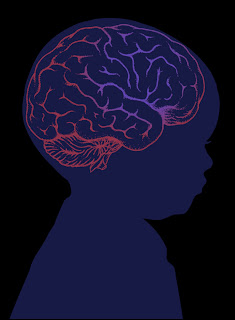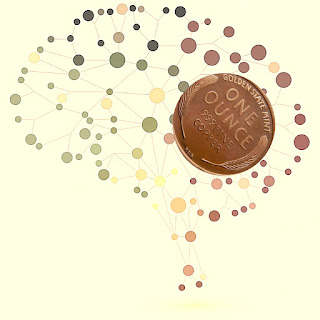A TALE OF DIMINISHED REFLEXES : NEONATAL HYPOTONIA EXPLAINED (PART II) !!!!!! BY DR. VANDANA PATEL (PT)
Before heading through this blog please read my previous blog PART 1 HYPOTONIA, and then continue reading Part II.
Neonates with hypotonia displays decreased strength, decreased activity tolerance, delayed motor skill development, rounded shoulder posture with a tendency to lean onto supports, hypermobile joints, increased flexibility, poor attention and motivation.
ASSESSMENT OF HYPOTONIA
On Observation the hypotonic newborn has a characteristic frog-leg appearance when lying supine with decreased spontaneous movement abduction of the hips and either extension of the arms or flexion at the elbows with the hands resting besides the head. Reduce tone leads to muscle atrophy, hyperextended joints.
A conventional test for hypotonia is to tap the wrist of the outstretched arm, in which case the affected limb will be displaced through the wider range than the normal or may oscillate; this is due to the failure of hypotonic muscle to fixate the arm at the shoulder. When the affected limb is shaken, the flapping movements of the hands are of wider excursion than normal. If the patient places his elbow on the table with the arms flexed and the hands are allowed to hang limply, the hand of the hypotonic muscle will sag more than that of the normal tone.
Evaluation of tone involves both the observation of resting posture (passive tone) and the assessment of resistance of the limbs through passive movement or to changes in posture (active tone).The infant’s gestational age, postnatal age, and level of alertness have a major influence on tone and clinical observations should be interpreted in the context of these factors. In general, during the development of the nervous system there is a caudal-cephalic progression in the maturation of myelination and consequently in the development of flexor tone, which is reflected in the resting posture of the infant and his or her response to passive manipulation. The normal maturation of resting posture and the response to passive manipulation at various gestational age.
PHYSIOTHERAPY MANAGEMENT OF HYPOTONIA:
- Early signs
Quality of tone
Postural instability
Hypermobility
Possible deformities
Respiration
Oro-motor problems
Personality characteristics
- Treatment Principles
1. Active participation
2. Allow ample time to process sensory information
3. Developing control in midranges and proximal control
4. Building endurance and sustained muscle activity
5. Graded sensory input
6. Keep watchful eye for possible tonal changes
TREATMENT APPROACHES
Swaddling
Positioning
Kangaroo mother care
Massage
Orofacial regulation therapy (ORT)
Other Intervention techniques to improve tone for patients with hypotonia can include quick stretch, tapping, resistance, approximation, and positioning.
- Postural Instability correction
- Weight bearing Exercises
- Supportive Protective Devices (Swedish knee cage for hyperextended knee)
- Sensory stimulation techniques and early continued movement experiences can be used to optimize available sensory inputs and promote movement.
- It is important to focus the babies attention on the desired movement and verbally cue the patient to attempt volitional contraction.
Swaddling:
Swaddling is an age-old practice of wrapping infants snugly in swaddling cloths, blankets or similar cloth so that movement of the limbs is tightly restricted. Swaddling bands were often used to further restrict the infant. It was commonly believed that this was essential for the infants to develop proper posture.
- Neuromuscular facilitation technique:
1. Quick stretch
Stimulus:
Quick stretch applied to a muscle.
Activates:
Muscle spindles (facilitates IA endings) muscle spindles provides input to higher centers
Response:
facilitates or enhances muscle contraction due to peripheral reflex effects (Facilitates agonists and inhibits antagonists, facilitates synergists, reciprocal innervations effects)
Techniques:
Quick stretch tapping over muscle belly or tendon
2. Resistance:
Stimulus:
A force exerted to muscle
Activates:
Muscle spindles ( Ia and II endings) and golgi tendon organs (Ib endings)
Response:
Facilitates or enhances muscle contraction due to peripheral reflex effects (Facilitates agonists and inhibits antagonists, facilitates synergists, reciprocal innervations effects
Hypertrophies extrafusal fibers
Enhances kinesthetic awareness
Techniques:
Manual resistance, use of body weight and gravity( with hypotonic muscle eccentric and isometric contractions are used before concentric.
Too much resistance can easily overpower weak hypotonic muscles and prevent voluntary movement, encourage substitution.
3. Fast vestibular stimulation:
Stimulus:
High intensity vestibular stimulation, for example, fast spinning, irregular movements with acceleration and deceleration components
Activates:
Facilitates semicircular canals (phasic receptors)
Response:
Facilitation of tone
Improves coordination
Stimulates normal postural activity
Techniques:
Fast spinning, for example, spinning in a chair, mesh net or hammock (mainly used for downs syndrome).
Massage therapy
Massage is partly believed to improve the tone.
Usually given for 30-45 mins after feed in morning and evening.
Step 1. Prone position: Four firm strokes of 5 secs each over the back with the palm of the hand
a. Forehead to scalp down to the neck.
b. From the midline of the neck towards both the upper trapezius
c. Shoulders towards the hand
d. Back of the neck down to the buttocks.
Step 2. Supine position: Four firm strokes of 5 secs each over the back with the palm of the hand
a. Forehead: from midline outwards with both hands simultaneously.
b. Checks: from side of the nose to both the hands rotating in clockwise and anti clockwise directions.
c. Butterfly stroking in abdomen.
d. From shoulders to hands
e. From hips to ankle
f. Palms: from wrist to finger tips
g. Sole: from heel to toe tips
Step 3. Supine with the movement of hands and legs.
Kangaroo Mother Care
Caring skin-to-skin low birth weight (LBW) babies
It promotes
Breast feeding
Effective thermal control
Prevention of infection
Parental bonding
Procedure:
o Place baby between the mother’s breasts in an upright position
o Head turned to one side and slightly extended
o Hips flexed and abducted in a “frog” position; arms flexed
o Baby’s abdomen at mother’s epigastrium
o Support baby’s bottom
Leg control wrap:
Orofacial regulation therapy (ORT)
Nutritional rehabilitation
Oral sensorimotor normalization for hypersensitive areas inside and outside the mouth
Before each meal advice to patient’s mother
To rub the child’s face and outer gums with a firm pressure of hands and fingers
3 times in one session and 3-4 sessions in a day
To normalize hyperactive gag reflex
Maneuver of "walk" the tongue
3 times in one session and 3-4 such sessions a day
Significant improvement was seen in spoon feeding, chewing and swallowing but there was no significant change in drinking skills
These nutritional rehab was quite rewarding since these effort have great potential to improve their weight, muscle mass, decreased irritability improvement in immune system
Drooling
Caused by:
Poor head control
Disordered oro-motor control
Inadequate swallowing skills
Incomplete lip closure
Pharyngeal sensory deficits
Oro-motor training aimed
To improve tongue position and mobility, lip closure, jaw position and stability
It consists of :
Brushing
Vibration
Icing
Vibration was applied to the masseter, the anterior digastric muscles and the upper lip for two minutes in each area
Stroking and tapping were applied on both the upper and lower lips to improve normal movement pattern.
Positioning to carry the hypotonic child:
Strengthening of muscles:
Strengthening of muscles of the child should be advised as early as before than age of 3 years as this can help in improving the axial/ proximal control of the body which can help for the development of distal motor control in later age.
Strengthening can be incorporated in the form of positioning, with the use of bolster, Bosu-ball, Wedge, etc.
In the later stages of life child can be trained for advanced strengthening techniques and balance techniques.
Last but not the least, these kids should be specifically trained for Respiratory muscle strengthening as they will face respiratory problems due to hypotonia in respiratory muscles too.
Respiratory system training:
- Breathing exercises
- Use of advanced techniques of muscle strengthening
- Respiratory PNF
- Spirometry
👶👶👶👶👶
For any further queries kindly DM on instagram page @tinyyears_physicaltherapy💬💬💬💬💬
💥💥💥💥💥
References:
1. Tecklin J.S, Pediatric physical therapy. 4th edition, chapter 3- 9, page no. 67- 363
2. Ropper A.H, Brown R.H Adams and victor’s principles of Neurology. 8th edition, chapter 4, page no. 505-506
3. Sullivan B.S, Physical rehabilitation assessment and treatment. 4th edition,chapter 8, page no. 183-184
4. Gowda V, Parr J, Jayawant S, Evaluation of the floopy infant, Pediatrics and child health 18:1, 2007
5. Purves et al, Neurophysiology of medicine. 4th edition, page no. 1-13
6. Hill Alan. Current management in child Neurology, Neonatal hypotonia.3rd edition, page no. 528-534
7. Downie A.P, Neurology for physiotherapists. 4th edition, chapter 4, page no. 60-84
8. Toorn V.R, Clinical approach to the floopy child. Volume 22, page no. 449-455
9. Harris S.R., Congenital hypotonia: clinical and developmental assessment. Developmental medicine and child neurology; 50: 889-892
10. Fredericks M. C. Pathophysiology of the motor systems, chapter 19, page no. 446-450









Comments
Post a Comment